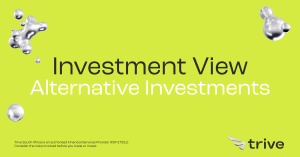
Active vs. passive investing, which is the best debate, has been gaining momentum again in recent years, so let’s take e a closer look at these two contrasting investment strategies.
Active Investing
Active investing is probably the most traditional approach for managing investment portfolios which involves a hands-on approach that actively involves managing and trading assets daily.
Active management typically tries to beat a benchmark index like the JSE Top40 or S&P 500, which usually involves high levels of market analysis and expertise to establish market positions and sizes.
Retail investors can also actively manage their portfolios from the comfort of their living rooms using intelligent devices linked to their brokers.
For those retail investors with limitations, a fund manager might be a better option as they have a wide range of data on every investment in their portfolios. This data stretches from quantitative and qualitative data about assets to broader market and economic trends. This comes in handy as constant monitoring of portfolios is needed, as the slightest miscalculation could see a portfolio fall victim to volatile markets. This brings us t some of the advantages of active investing. It is very flexible when volatility strikes, and endless trading and investment strategies exist.
But active management does not come with its challenges and disadvantages, like, for instance, higher fees for managing portfolios on behalf of clients. Actively managed funds like Unit Trusts in South Africa or Mutual Funds in the US attract higher expense ratios brought on by the amount of research and trades involved. Portfolio risks are also headwinds that could see one wrong investment drag down an entire portfolio.
Passive Investing
Passive investing, also known as a “Buy and Hold” strategy by some market participants, is a hands-off investment approach with a long-term goal.
Passive investing focuses on purchasing a whole Index fund or Exchange Traded Fund (ETF) that duplicates the performance of a significant benchmark index like the JSE SA Top 40 or S&P 500. This buy-it-and-forget-it approach aims to replicate the performance or movement and requires less attention than active management.
Passive investments are usually much more cost-effective as there are fewer transactions and less daily maintenance for the investor. The lower cost is also a significant advantage for investors, along with the increased transparency of the funds your investment is tracking.
Some of the downfalls of passive investing are no exit strategy or the possibility of hedging positions when a bear market arises as you are invested in the benchmark. Currency risks also play a role, and tracking errors sometimes creep in that could bolster a client’s expectations.
In closing, while both strategies have their place in an investor’s portfolio, it is always wise to diversify an investment portfolio as much as possible. Both active and passive investing fulfill these objectives, and one above the other should not be preferred.




